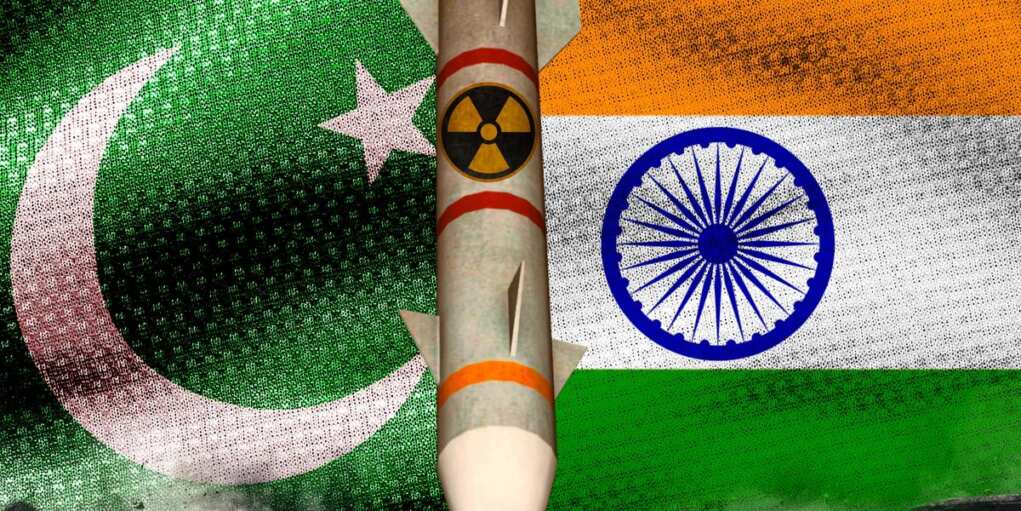India vs Pakistan Goes Hot—Is WW3 Next?

Tensions between nuclear-armed rivals India and Pakistan exploded Wednesday after India launched airstrikes against what it described as terrorist camps in Pakistan-controlled territory. Pakistan swiftly retaliated, claiming it shot down five Indian fighter jets and accusing New Delhi of committing an “act of war.”
According to India’s Defense Ministry, the strikes targeted at least nine sites used by militant groups such as Lashkar-e-Taiba and Jaish-e-Mohammed — outfits long accused of carrying out attacks in Indian-administered Kashmir. The ministry insisted the operations were “focused, measured and non-escalatory,” avoiding direct attacks on Pakistan’s military infrastructure.
But Pakistani officials paint a very different picture. Lt. Gen. Ahmed Sharif, Pakistan’s top military spokesman, said six locations were hit by Indian missiles in Pakistan-administered Kashmir and Punjab province, killing at least 26 civilians — including women and children.
“Pakistan has every right to give a robust response to this act of war imposed by India,” declared Prime Minister Shehbaz Sharif, warning that a “strong response is indeed being given.”
What followed was a dramatic escalation: Pakistan’s air force claimed it shot down five Indian jets, three of which reportedly fell inside Indian-controlled territory. Wreckage landed across villages in Kashmir and Jammu, with local witnesses describing fiery midair explosions and chaos as planes plummeted into civilian areas.
“There was a huge fire in the sky. Then we heard several blasts,” said Mohammed Yousuf, a resident of Wuyan in Indian Kashmir, where debris from one aircraft scattered across a mosque and schoolyard.
Sachin Kumar, a villager in Bhardha Kalan, told the Associated Press he saw a massive fireball after a plane crashed nearby. “We found the two pilots at some distance in injured condition. They were Indian pilots and soldiers took them away,” he recalled.
India’s military confirmed the operation, dubbed “Operation Sindoor,” was in response to an April attack that killed 26 Hindu pilgrims in Indian-controlled Kashmir. That attack was claimed by a group calling itself “Kashmir Resistance,” which Indian intelligence says is tied to Lashkar-e-Taiba — a Pakistani militant organization officially disbanded but still believed to be active under new names.
The Indian strikes reportedly targeted camps used for training and arming militants, and India stressed that no Pakistani military installations were involved.
But the situation quickly turned deadly on both sides. Pakistani shelling killed at least seven Indian civilians, while falling debris from downed jets caused further destruction. One strike reportedly damaged the Bilal Mosque in Muzaffarabad, the capital of Pakistan-controlled Kashmir.
Pakistan’s National Security Committee met in emergency session, while Indian Prime Minister Narendra Modi convened his own Cabinet Committee on Security and canceled an upcoming foreign trip to Europe.
Indian authorities remain on high alert as skirmishes along the border threaten to spiral into a broader conflict. The Pakistani government warned of a “nuclear flashpoint,” renewing its call for international mediation — specifically urging former President Trump to intervene, echoing appeals made during earlier flare-ups in 2019 and 2020.
Despite efforts by India to portray its actions as contained, the air combat marks one of the most serious military escalations between the two nations in recent years. With both sides mobilizing, the risk of further strikes — or even full-scale war — is growing by the hour.
For now, world leaders are watching closely. The U.S., China, and Russia have yet to release formal statements. But as tensions boil over in Kashmir, the question is no longer if more conflict will erupt — but when.
Stay tuned as this crisis unfolds.

